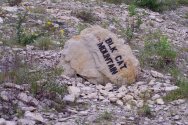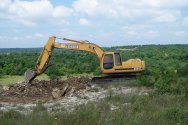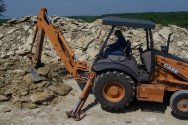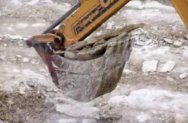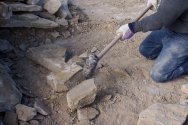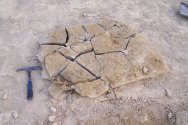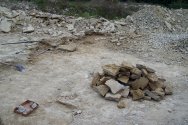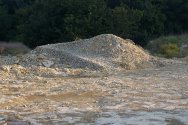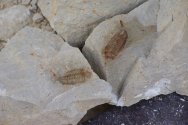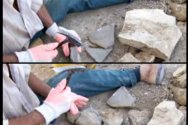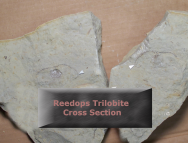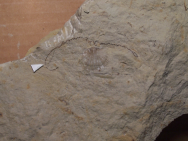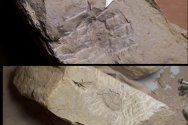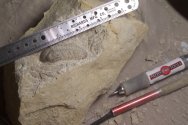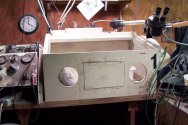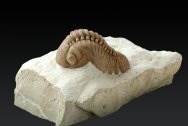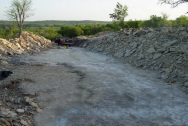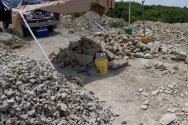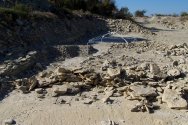Finding
and preparing trilobites in the limestone matrix
of coal county, oklahoma differs markedly from
collecting in the shale of the western U.S. The
gallery below takes you through the arduous process
that
Bob Carroll of Black Cat Mountain Trilobites has done
for more than twenty years. He does this for a living,
but
also out of love. |
Phase
1: The first process is preparing the quarries for
the dig
season. |
|
|
|
|
Black
Cat Mountain is really a small hill overlooking the
Haragan ansd Bois d' Arc Formation. |
A
large trackhoe is brought in to remove the formation's
overburden down to a trilibite bearing level. |
Next,
a backhoe is used to break up the limestone layer into
large slbs. |
The
backhoe shovel scraps up a bedding plane layer that
is typically a few to several inches thick. |
Phase
2: Then, the real work begins. Months of back-breaking
work
follows throughout
the wickedly
hot Oklahoma summer. Well over a hundred trilobites will
be found, but many won't make it through preparation. |
|
|
|
|
A
sledge is used to break the big slbs into smaller
ones as above. |
Here's
a day work (above left) of trilobite hunting, as these
have to be spilt into smaller yet pieces yielding
the tailings pile above right over a month. |
|
|
|
|
Only
rarely will a trilobite be found on the layer
surface.
Rather,
rocks have to be tediously spilt into small pieces
in search of a tell-tale trilobite exoskeleton cross
sections. This is both art and very hard work. Some
trilobites
are in multiple pieces. Think practice doesn't make perfect,
watch
this movie of Bob Carroll breaking rock. |
The
vast preponderance of these Oklahomo trilobites
are found by splitting and resplitting the
limestone in search of tell-tale trilobite cross
sections, as shown in the Reedops above. It takes
a keen eye , and a lot of experience to identify the species.
Note the two pieces above left are mirror images.
They will be glued together to proceed with preparation. |
| Phase 3: Laboratory Preparation
is a tedious multistep process, with every trilobite
requiring many hours with special equipment: 1) an air
scribe which is like an itsy bitsy air hammer with a
sharp point vibrating at very high frequency; and 2)
A mini-sandblaster using a soft matrix operating at up
to 100 psi. It is during the early stages of roughing
out the trilobite with an air scribe that many are discovered
to be too incomplete to finish and must be tossed out. |
|
|
|
|
First,
the pieces have to be glued back together. |
A
large portion of the covering matrix is removed with
the air scribe.
|
The
mini sandblaster is operated in a sealed hood utilizing
a microscope. |
Most
of the ones that make it to the sandblaster end up
like above. |
|
|
|
|
|
Various
horizons among the many layers of the Haragan and
Bois d' Arc Formations
that have been worked by Bob Carroll over the last
20 years. |
|
|
|
|
Above
to be done: Rough out and finished of several species. |
|
|
|
|
Above
to be done: Selected batches of finished Oklahoma
trilobites. |
|

